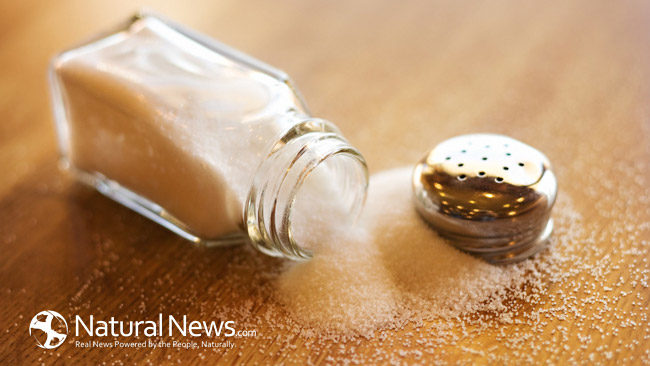Salt – So much controversy, but what’s the truth?
It seems like forever now all you hear is “salt is bad for you”. You hear of people with health conditions like high blood pressure or heart conditions being placed on bland low or no salt diets. But why is that? Don’t salts exist naturally in food we eat?
The problem comes in with table salt (also called Iodized salt). This may come as a shock, but table salt is comprised of sodium chloride and along with that often contaminated with sand and glass. Herein lies the problem. When you consume this lovely mixture the sand and glass are abrasive. They scratch and make small tears in your body including your veins. Your body reacts by trying to patch and heal with fats (cholesterol). This often causes your body to make more cholesterol than needed and cause blockages and in more extreme cases can lead to stroke or heart attack. So it does make sense that doctors place you on a salt restricted diet.
What the medical community is missing here is that salt is an important component to the human body.
1. Salt helps with regulation of blood pressure.
Sodium maintains your body’s balance of fluid and water retention. It helps maintain a healthy blood pressure.
2. Nerve Function
Sodium supports proper nerve function. A deficiency can cause muscle cramps.
3. Digestion
Salt also aids in digestion and can affect kidney function helping to retain nutrients.
So, if your body needs salt but table salt is bad and even dangerous what are you supposed to do?
Up until recent years Sea Salt was a wonderful choice. Made by nature it filled all the good benefits of salt and none of the bad. With recent environmental changes – such as the Gulf and other oil spills followed by the dumping of thousands of gallons of toxic oil dispersant Corexit as well as Fukushima Nuclear Plant’s continuing radiation leak, sea salt is no longer our recommendation as you may be causing more problems than you are healing.
This leaves us with the best choice of all – Pink Himalayan salt. Himalayan salt is one of the most profound and fundamental health re-discoveries of our time. This crystalline, unrefined salt comes from the original prime body of sea—The Primal Sea.
Located deep below the earth’s surface, Himalayan salt was created when the primal sea was dried up by the sun and then compressed over millions of years by the pressure of the landmasses that formed the top of it.
Taken from the foothills of the Himalayan Mountains, Himalayan salt is still hand mined and sun dried. By keeping these practices, the salt maintains its original properties containing 94 different minerals and trace minerals our bodies are made up of, including calcium, magnesium, potassium, copper and iron.
These are minerals our body was designed to utilize. Our soil has been depleted for the most part and they are no longer absorbed by the fruits and vegetables we eat so most of us are not getting them at all.
Pink salt is a wonderful addition to everyone’s daily diet and unlike table salt, which is damaging to the body, it heals and re-mineralizes.
Because of these minerals Himalayan pink salt can:
Create an electrolyte balance
Increases hydration
Regulate water content both inside and outside of cells
Balance pH (alkaline/acidity) and help to reduce acid reflux
Prevent muscle cramping
Aid in proper metabolism functioning
Strengthen bones
Lower blood pressure
Help the intestines absorb nutrients
Prevent goiters
Improve circulation
Dissolve and eliminate sediment to remove toxins
It is even said to support libido, reduce the signs of aging, and detoxify the body from heavy metals.
For the best quality Pink Himalayen Salt please visit www.bestpinksalt.com







